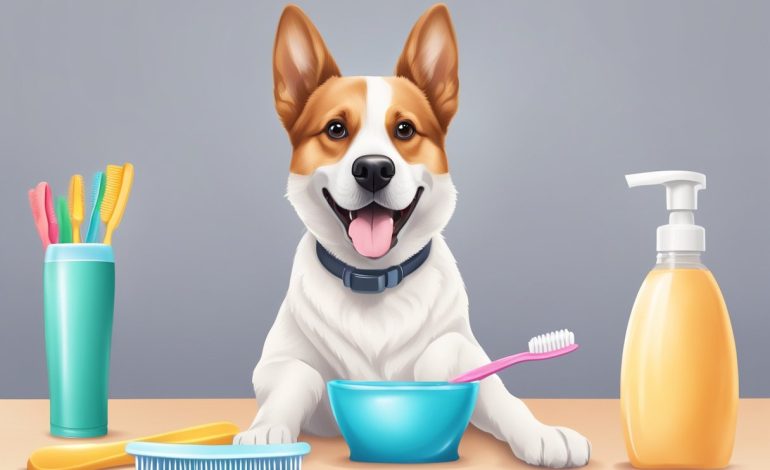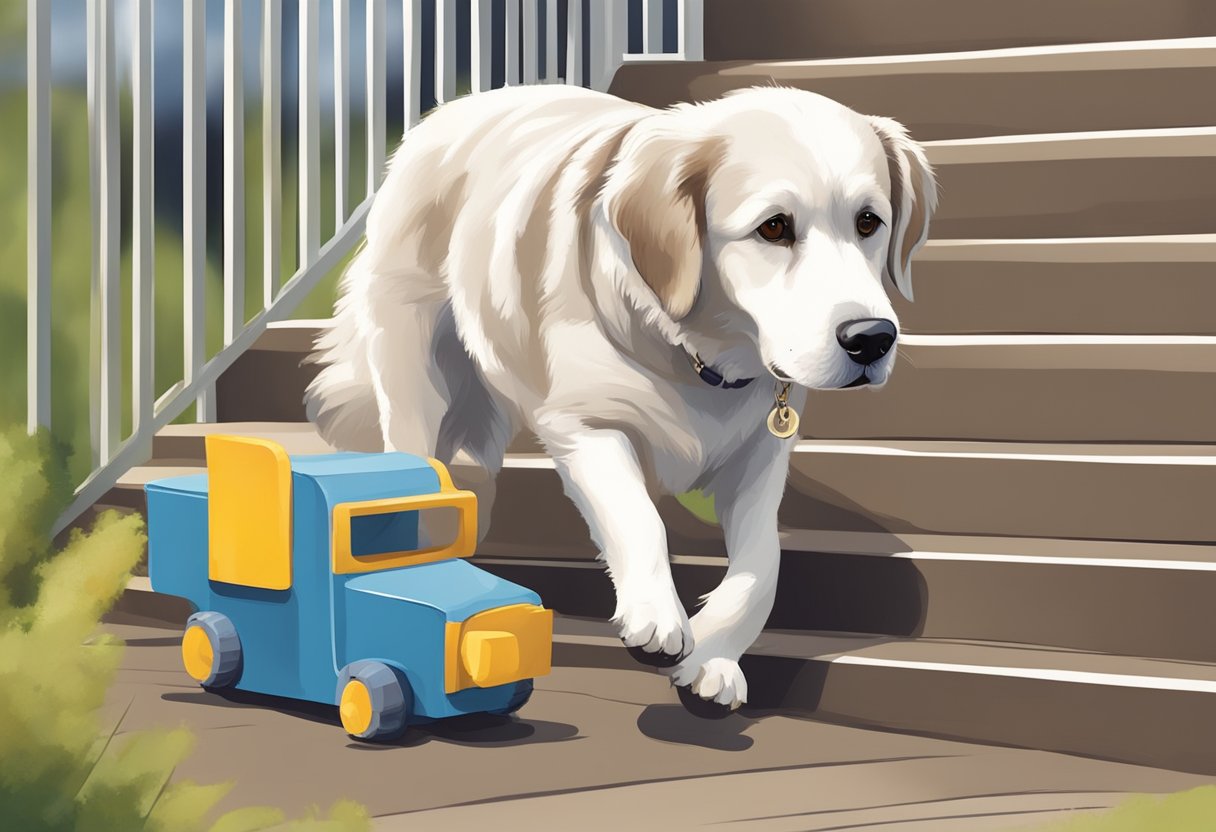Tips for Maintaining Your Pet’s Oral Health

Your pet’s oral health is a crucial part of their overall wellbeing. Poor dental hygiene can lead to serious health issues, including heart and kidney problems. Ensuring regular dental care, such as brushing and professional cleanings, can significantly reduce the risk of these complications.
It’s essential to recognize the signs of dental problems early. Bad breath, difficulty eating, and inflamed gums are common indicators that your pet may need professional attention. By monitoring these symptoms and addressing them promptly, you can help maintain your pet’s oral health.
Different tools and techniques can make maintaining your pet’s teeth easier. Dental chews, specialized toys, and diets designed for oral health can all contribute to healthier gums and teeth. Regular veterinary check-ups are important to catch any emerging issues and provide more advanced care if needed.
Key Takeaways
- Regular dental care prevents serious health issues.
- Monitoring symptoms helps catch problems early.
- Dental chews and specialized diets support oral health.
Recognizing Common Dental Problems in Pets

Pets can suffer from various dental issues that impact their overall health. Key indicators of dental disease include visible symptoms and the buildup of plaque and tartar.
Identifying Symptoms of Oral Disease
Oral disease in pets often starts with bad breath. While it’s normal for pets to have some odor, a foul smell could indicate dental disease. Another common symptom is broken or loose teeth, which may cause your pet discomfort or difficulty eating.
Look for red or bleeding gums, which are signs of gingivitis. Pets may also drool excessively or avoid chewing on certain sides of their mouths. These issues can lead to periodontal disease if not treated promptly.
Other warning signs include reluctance to eat hard food or play with chew toys. Pets might also paw at their mouths or show signs of pain. Regular veterinary checks are crucial to identifying these problems early. For more symptoms to watch for, visit the American Veterinary Medical Association.
Understanding the Effects of Plaque and Tartar
Plaque forms as a sticky film on your pet’s teeth. If not removed, plaque hardens into tartar, which adheres strongly to the teeth. This buildup can lead to gum disease and infection.
Regular brushing helps prevent plaque, but tartar may require professional cleaning. Plaque and tartar contribute to gingivitis and more severe periodontal disease, leading to tooth loss and painful infections. Chew toys and dental treats can aid in reducing plaque accumulation.
Untreated plaque and tartar can cause systemic infections, affecting your pet’s heart and kidneys. Dental chews and toys, along with annual vet visits, are effective for maintaining dental health. Learn more about preventing tartar at Southern Hearts Veterinary.
The Importance of Regular Dental Care
Maintaining your pet’s oral health is crucial for preventing dental diseases, pain, and other serious health issues. Regular dental care includes routine check-ups, at-home care techniques, and choosing the right products to ensure your pet’s mouth stays healthy.
Routine Check-Ups and Professional Dental Cleanings
Regular check-ups with a veterinarian are vital for your pet’s dental health. During these visits, the vet will perform a thorough dental exam to check for signs of dental disease, such as tartar buildup, gum inflammation, and loose teeth. Professional dental cleanings are crucial because they remove plaque and tartar that at-home care might miss. Cleanings under anesthesia allow for a deeper, more comprehensive cleaning without distressing your pet.
Veterinary professionals can also address any issues that are found, from minor adjustments to more complicated procedures like extractions. Consistent check-ups and professional cleanings can help to prevent severe dental problems, ultimately enhancing overall health and well-being.
At-Home Dental Care Techniques
At-home dental care is an essential part of maintaining your pet’s oral hygiene. Daily toothbrushing is the gold standard; using pet-friendly toothpaste and a soft-bristle brush helps remove plaque and prevent tartar buildup. Incorporating dental chews and toys into your pet’s routine can also aid in cleaning their teeth by reducing plaque and massaging gums.
Regularly checking your pet’s mouth for signs of dental issues, such as bad breath, red or bleeding gums, and difficulty eating, allows for prompt veterinary attention. Additionally, water additives and dental wipes can be beneficial in maintaining oral hygiene between professional cleanings.
Choosing the Right Dental Products
Selecting appropriate dental products is crucial for effective at-home care. Dental chews and toys should be chosen based on their ability to clean teeth and stimulate gums. Products labeled as Veterinary Oral Health Council (VOHC) approved are typically reliable. Pet-safe toothpaste and brushes are essential because human products can be harmful.
Dental diets and treats designed to reduce plaque and tartar can also contribute significantly to your pet’s overall dental health. It’s important to consult with your veterinarian to find the best dental care products tailored to your pet’s specific needs. For more detailed advice, refer to resources like this guide by veterinarians.
Diet and Nutrition for Healthy Teeth and Gums
Maintaining your pet’s oral health goes beyond brushing. What they eat plays a crucial role in keeping their teeth and gums healthy. A balanced diet and dental treats are key components of a comprehensive oral care routine for pets.
Balanced Diets and Pet Food Choices
A balanced diet is essential for maintaining your pet’s overall health, including their oral health. Nutrient-rich pet foods, containing adequate levels of calcium, phosphorus, and vitamins, help in keeping teeth and gums strong.
Dry pet food, often referred to as dry dental food, can be particularly beneficial. As pets chew on this food, it helps remove plaque and tartar. Additionally, avoid feeding pets sugary foods and sticky treats that can stick to teeth and cause decay.
Consider high-quality pet foods that are specifically formulated to support dental health. These products often have the Veterinary Oral Health Council (VOHC) seal of approval. Always consult with a veterinarian to confirm that your pet’s diet is meeting their nutritional needs.
Benefits of Dental Treats and Chews
Dental treats and chews are widely recommended for supporting dental health in pets. These products can help reduce plaque and tartar build-up while satisfying your pet’s natural urge to chew. Choose dental chews labeled as effective by the Veterinary Oral Health Council for the best results.
Some dental treats are designed to scrub the teeth as your pet chews, helping to clean hard-to-reach areas. Additionally, these treats often contain beneficial ingredients like enzymes and antimicrobials that help keep the mouth clean and free from harmful bacteria.
Limit the number of treats you give your pet to avoid excess calories. Regular use of appropriate dental treats and chews can make a noticeable difference in your pet’s oral hygiene routine. Always supervise your pet while they are chewing to prevent choking hazards.
Addressing Advanced Dental Issues and Treatments
Advanced dental issues in pets require precise interventions such as surgery or extraction and a deep understanding of serious dental conditions like tumors or severe periodontal disease.
When Surgery or Extraction is Necessary
Surgery or extraction is often required when dental problems become severe. Conditions like periodontal disease and tooth abscesses commonly lead to the need for these procedures. During an oral exam, the veterinarian assesses the teeth and gums to determine if surgery is the best option.
Extractions are necessary when teeth are irreparably damaged or infected. This can alleviate significant pain and prevent infections from spreading. Anesthesia is used during these procedures to ensure that the pet remains comfortable and still.
In some cases, oral surgeries are required to remove tumors or cysts. These conditions often need prompt treatment to avoid further health complications. Postoperative care involves pain management and antibiotics to prevent infections.
Understanding Advanced Dental Conditions
Advanced dental conditions in pets can vary widely. Periodontal disease is one of the most common serious dental issues, often leading to tooth loss if untreated. It occurs when plaque and tartar build-up and cause inflammation and infection of the gums. Regular dental cleanings and at-home dental care can help prevent this condition.
Tooth resorption is another condition that can affect pets, causing the root structure of the tooth to break down. It can be painful and often requires extraction of the affected teeth.
Oral tumors and cysts can grow in pets’ mouths, necessitating surgical intervention. Early detection through routine dental check-ups can improve outcomes. Signs like unusual growths, foul breath, and difficulty eating should prompt a visit to the veterinarian for a thorough examination.








